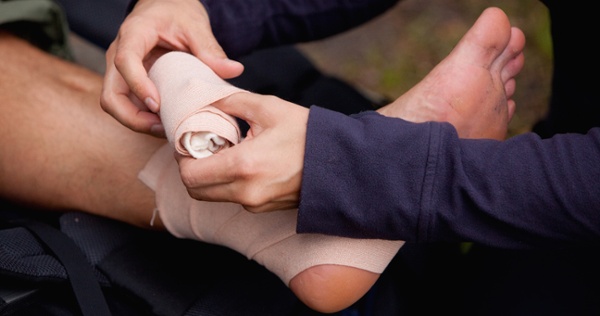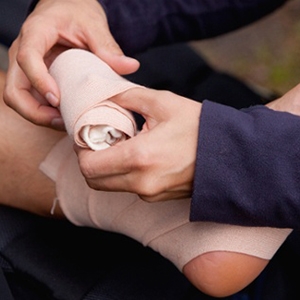
Sprained ankles can occur at any time, from a wrong move playing sports to stepping awkwardly onto uneven pavement. Either way, the pain and inconvenience from a sprained ankle makes it an injury you shouldn't ignore.
For years, the treatment technique for sprained ankles has been RICE therapy: Rest, Ice, Compression, Elevation. The new format is POLICE. RICE was tweaked based on research that showed movement of the sprain helped healing. POLICE includes more motion and less weight bearing on an injured ankle to help you recover more quickly.
TYPES OF SPRAINED ANKLES
Before you POLICE a sprain, it's important to find out how severe your ankle sprain is. This should be done by an orthopedic physician who can rule out possible fractures or other problems beyond a sprain. There are three degrees of ankle sprains:
- First-degree: Most likely the ligament is just stretched, but could be torn. Loss of function is minimal, as is bruising and swelling. There's some joint stiffness and pain.
- Second-degree: There is a significant amount of pain and swelling, making walking difficult. Bruising typically starts within 3-4 days, and the affected area is tender.
- Third-degree: Surgery might be needed here, as this sprain involves a complete ligament rupture that can prevent walking. Pain is severe and swelling is substantial.
POLICE YOUR SPRAIN
Once you've determined that your sprain does not require surgery, it's time to treat it using the updated philosophy of POLICE: Protect, Optimal Loading, Ice, Compression, Elevation. Here is each step of the POLICE method:
- Protect: The first thing you need to do after spraining your ankle is to protect it. Whether you decide to use crutches, splint, or a brace, the first 24-48 hours demand keeping your injury out of harm's way.
- Optimal Loading: This is the biggest break from RICE, as it involves motion during the recovery process. Instead of resting and keeping it completely immobilized, POLICE encourages light movements of the joint without the full weight of your body on the injury or long periods of full weight on the injured area.
- Ice: Apply ice for 20-minutes giving yourself about an hour and a half between icing sessions. This keeps your skin from going too numb and allows you to feel the amount of movement and pressure you're putting on the ankle.
- Compression: Compressing the swelled area with a wrap or ace bandage will help it reduce more quickly. This helps you to gain motion quicker and be more stable when you do. Don't compress too tightly or blood flow can be reduced.
- Elevation: Elevating the ankle when you're not moving it prevents blood from pooling which helps the swelling to go down and healing to begin.
POLICE offers a more active solution to sprained ankle recovery, based on recent studies showing that more motion is beneficial. Be sure to consult a medical professional before starting any recovery plan.
If you are training for an athletic competition or you are just trying to get back in shape, you may be interested in our free ebook, How to Stay Active When You've Overtrained. Download it today.







